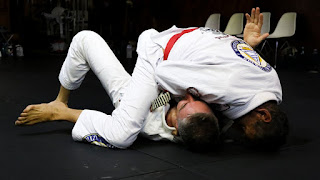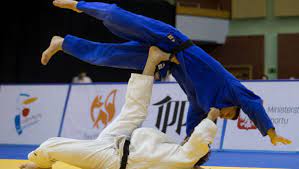A Beginner's Guide To Brazilian Jiu-Jitsu
There is no denying the fact that there are many benefits of learning Brazilian jiu-jitsu. You can expect to enjoy a very active life if you decide to enroll in a training course and obtain a certificate as a brown belt. However, you must also keep in mind that learning martial arts for self-defense is not enough to protect yourself from attackers. Also, being well-trained will not help if you do not know how to apply your skills in real life scenarios. You must get practical hands-on experience with defending yourself in real-life situations such as mugging, street fighting and attack-dog scenarios.
Another important fact about Brazilian Jiu-Jitsu (BJJ) is that it has some elements of both Judo and wrestling. The reason why Judo is referred to as "the game of war" is because it is used in combat as well. On the other hand, most people view Judo as a style of relaxed competition, and they do not compare it with BJJ. Brazilian Jiu-Jitsu has been adopted by the U.S. military and is now used in many military training programs.
If you want to enjoy the benefits of Brazilian jiu-jitsu (BJJ) but also learn a host of other beneficial self-defense techniques, you should consider enrolling in a grappling school. A grappling school offers both BJJ and Judo classes at the same time. For example, you can attend a grappling class and then go Judo practice for an extra benefit. It would be wise to take several grappling lessons so that you will have a good base of knowledge about the martial art before moving on to Judo. The more experience you gain in grappling, the more you will be able to apply the techniques in a realistic situation.
The reason that Brazilian jiu-jitsu and Judo complement each other so well is because they are both rooted in an ancient martial art. Both sports are highly physical, and both require a tremendous amount of endurance. Judo is considered to be a more feminine sport compared to BJJ, which has its roots in male martial arts. However, the art of Judo actually originated in China.
Many people may be intimidated to try Brazilian jiu-jitsu or Judo for real if they are not extremely fit or a member of the military. Both combat sports require strength and stamina, and there is no gender difference in terms of athleticism. Although these skills may seem similar, the differences between these two sports really make their techniques unique. Being able to effectively defend yourself in the case of an attack will require training in all of the disciplines of MMA including submissions and guard positions.
Due to its popularity, a lot of people have taken up Brazilian jiu-jitsu self-defense as a hobby and have taken classes to learn how to protect themselves in real-life scenarios. If you are considering trying out a martial arts class for self-defense purposes, it is important that you talk to your instructor beforehand to make sure that they're qualified to teach it. You should also check online for videos, training manuals and other resources that can help you prepare for a class. Just like learning any new skill, practicing in the proper setting with a qualified instructor can go a long way to making your learning experience much more productive.
If you are interested in learning martial arts for self-defense, there's no better time than right now. The Ultimate Fighting Championship is just around the corner, and it will feature some of the best fighters from all over the world. If you're serious about learning the basics of Brazilian jiu-jitsu, learn the basic techniques now, before there are too many other people with those same techniques who know the basics better.



Comments
Post a Comment